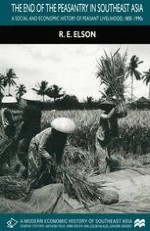1997 | Buch
The End of the Peasantry in Southeast Asia
A Social and Economic History of Peasant Livelihood, 1800–1990s
verfasst von: R. E. Elson
Verlag: Palgrave Macmillan UK
Buchreihe : A Modern Economic History of Southeast Asia
Enthalten in: Professional Book Archive
